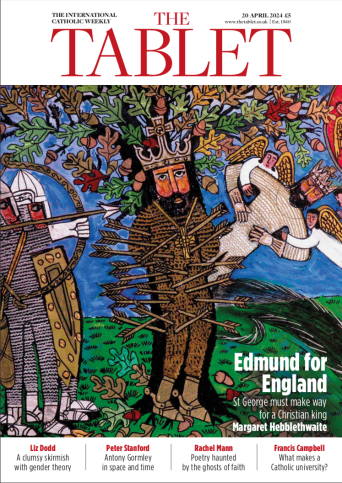One of the things Pope Francis picks out in his apostolic exhortation Evangelii Gaudium is the importance of popular religiosity. It is now widely acknowledged that an unintended consequence of the transformation of Catholic consciousness at the time of the Second Vatican Council was a neglect of the ordinary forms of piety. Liberation theology in Latin America made this mistake, and later scrambled to retrieve many popular practices when it was realised how much energy and power they hold. A similar over-hasty demotion of devotions to Our Lady and the saints, the Stations of the Cross, Corpus Christi processions and so on happened here too – although my memory is that congregations at, say, benediction of the Blessed Sacrament, were already dwindling and many of these traditional devotions had lost, at least for a time, their popular appeal. Today some of them, such as Eucharistic Adoration, have returned – suitably refurbished, it is to be hoped, and theologically renewed. This is the territory Alana Harris’ study of Catholic devotional life in England examines.
Its title might mislead, because the “family” referred to is not Mum and Dad and the kids, but the Catholic family of England and the changing patterns of faith therein. It is based on oral histories collected from Catholics in the Diocese of Salford. Nineteen respondents were interviewed about their devotional practice and changes in their attitudes to the Eucharist and Mass, to Mary and the Holy Family, and to the cult of the saints (in particular, St Thérèse of Lisieux, St Bernadette and the Forty Martyrs of England and Wales). A great wealth of documentary evidence is also assembled across the period from the end of the Second World War until the 1982 visit to Britain of Pope John Paul II. The result is an impressive and sometimes surprising account of the changing ways in which different aspects of faith and practice are reconstructed by the religious imagination.
Harris finds a story of continuity and change. Mary, for example, clearly retains her central place in Catholic life and popular imagination in this period, but with a marked shift in her image – from an icon of motherhood within the Holy Family, to the strong woman of faith. The roots of these changed perceptions are traceable to social change in family life and changing cultural aspirations. Looming over the narrative here is the spectre of late-twentieth-century secularisation. But what is interesting, and this is the case that Harris is at pains to make, is that Marian and other forms of devotion have not “declined”, as the sociological storyline often puts it. In fact, they have evolved and have proved surprisingly resilient.
The evidence Harris has gathered seems to show that changes at the grass roots have been broadly consistent with the new theological emphases which came in with Vatican II. This is particularly clear in the way that eucharistic piety has been re-shaped, with a shift of focus from devotion to the Blessed Sacrament and adoration of Christ present in the consecrated host, to an appreciation of the Mass as the meal that gathers the family of the Church around the person of Jesus and nurtures the Kingdom values of justice, peace and truth. This change has not, of course, been universally welcomed, and Harris’ account of the early controversies over changes in the liturgy, which have re-ignited more recently, shows how hotly contested these developments in faith and practice have been.
The continuing hold of the saints on the Catholic imagination in England, demonstrated in recent years by the large crowds we have seen queuing quietly to file past the relics of St Thérèse or St Anthony of Padua, makes an intriguing tale. Harris constructs the narrative around the different strategies employed to present saints as role models. Thérèse has been endlessly packaged and re-packaged since her early death, with fresh twists in recent decades – from icon of piety, simplicity and steadfastness in suffering, to feisty and determined young woman. Special difficulties were presented by the Reformation martyrs: heroic figures who died for their refusal to conform to the Protestant settlement. Not only was their canonisation at risk because miracles had become harder to establish and because of the special sensitivities to be negotiated in the post-Vatican II era of ecumenical friendship; but presenting these martyrs from another age as role models was complicated by the emergence since the Second World War of the Catholic community into the national mainstream and the lowering of the barriers that had given it a sense of its own identity. Nevertheless, the canonisation of the Forty Martyrs in 1970 was carried off in a spirit of continuity with the past while accommodating the evident discontinuities in the present.
Harris’ main thesis is that real continuity can be seen across this period of turbulent change. The deep reality of Catholicism is still “intensely incarnational, experiential and familial-focused”. One of the values of this vivid description of ordinary religion and piety, which charts the evolution of English Catholicism at a critical point in its history, is that Harris keeps her ecclesiological reflections grounded in solid research. Other topics, such as how church leaders handled the 1980 National Pastoral Congress, are seen in a more constructive light when set in this context. And theological questions too, which this book provokes, can be revisited with the benefit of the wisdom of the ordinary lived experience of the faithful.
14 August 2014, The Tablet
Faith in the Family: a lived religious history of English Catholicism, 1945-82
Evolution of devotion
Edmund for England
 Loading ...
Loading ...
Get Instant Access
Subscribe to The Tablet for just £7.99
Subscribe today to take advantage of our introductory offers and enjoy 30 days' access for just £7.99



What do you think?
You can post as a subscriber user...
User Comments (0)